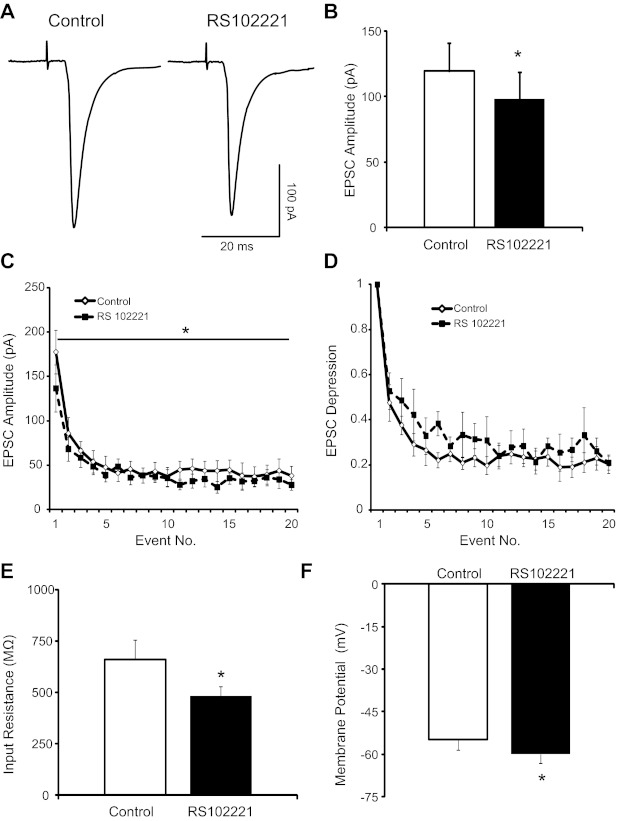Fig. 7.

5-HT2CR blockade reduce TS-EPSCs. A: representative traces of TS-EPSCs (30 sweeps, averaged) evoked at 0.5 Hz from a single cell during control and 5-HT2CR blockade by RS102221. Note the reduced amplitude after RS102221 (100 μM, 5 min). B: group raw data (n = 9) of TS-EPSC amplitude during control and RS102221. C: TS stimulation at 20 Hz produced use-dependent depression (◇), which was maintained after RS102221 (■). There was a decrease in the overall amplitude of TS-ESPC compared with control (P < 0.05, 2-way repeated-measures ANOVA). D: relative magnitude of EPSC depression from the 1st event. E and F: 5-HT2CR blockade with RS102221 (n = 9) decreased input resistance (E) and hyperpolarized membrane potential (F). *P < 0.05.
